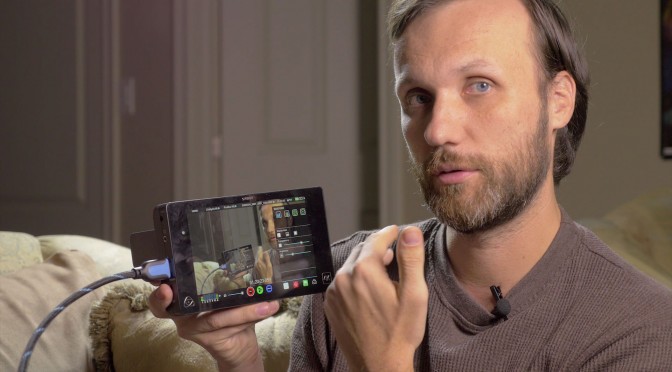I’ve finally had the time to test out the Atomos Shogun 4K. For those of you who don’t know, the Shogun is a 4K video recorder and monitor, all in one. When combined with a camera like the Panasonic GH4 or Sony A7s, it lets you record 4K in RAW or the high-quality 10-bit Apple ProRes 422 (up to 30fps). You can also shoot slow motion (120/60/50 fps) in full 1080P HD. As a monitor, it has a beautiful 7.1” 320ppi 1920×1080 touch screen. And those are just the highlights.
To see all the specs, check out the detailed product description at the B&H store.
Here is my review of the Shogun
I also did a test comparing 4K footage shot with the Panasonic GH4, but first recorder internally on the GH4 at 8 bit and then recorded on the Atomos Shogun at 10bit. Can you tell the difference?
Graded Version
Original Raw Footage
To learn how to use your camera’s histogram to judge the exposure, check out this tutorial (one of my earliest ones)
You can purchase the Shogun at B&H Photo Video
You will need extra batteries to run the Atomos Shogun for a whole day. I recommend at least three Sony NP-F970 batteries
Or you can also get this cheaper version of the battery
With all those gigabytes of footage to record, you’ll also want a sizeable solid state drive


I can’t see a difference in the video between the two examples, graded or not. I can’t see this being a good investment for the GH4. What do you think?
I will right away grasp your rss feed as I can’t find your e-mail subscription hyperlink or e-newsletter service.
Do you’ve any? Kindly permit me realize in order that I
could subscribe. Thanks.
use the link https://tomantosfilms.com/feed/atom/ for the rss feed
here are all the available feeds:
https://tomantosfilms.com/feed/
https://tomantosfilms.com/rss/
https://tomantosfilms.com/rss2/
https://tomantosfilms.com/rdf/
https://tomantosfilms.com/atom/
https://tomantosfilms.com/comments/feed/
Not only is this a great recorder with great exposure tools, but it is now capable of recording Prores Raw – as a free update! If you have a raw capable camera, then you should definitely try out Prores Raw and see if it helps your workflow – if you use FCPX, since (at the time of this writing) it is the only editor that can read the Prores Raw format.
At the same time, when you compare Prores Raw to cDNG raw, you lose some of the exposure control tools that “true” raw video allows – such as changing white balance and ISO in post. That being said, the amount detail and highlight recovery found in Prores Raw is astounding – even shots that seem massively overexposed can be brought back, with highlight details easily recovered (but even so, use correct exposure).